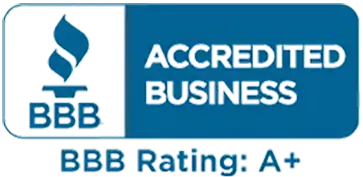Johns Manville Asbestos: A Complete Guide
Johns Manville was once one of the largest manufacturers of asbestos products in the country. After thousands of workers became sick and filed lawsuits, the company filed for bankruptcy and was ordered to create a trust fund for victims.
If you or a loved one worked with Johns Manville asbestos products and developed any type of mesothelioma, you may qualify for compensation. With over 40 years of experience, ELSM Law has helped thousands of families hold asbestos companies accountable and get the money they deserve.
Johns Manville Asbestos Trust At a Glance
- The Johns Manville asbestos trust has paid over $5 billion to injured victims and families since it was created in 1988. Funds are still available today for eligible claims.
- To file a claim, you must be diagnosed with mesothelioma or another asbestos-related disease and provide proof that Johns Manville is responsible for your exposure.
- Johns Manville asbestos exposure could occur on the job, while using contaminated products or at home through secondary exposure.
- Experienced asbestos attorneys at ELSM Law can determine your claim eligibility, collect any necessary paperwork and file a claim on your behalf.
Historical Use of Asbestos by Johns Manville Corporation

Johns Manville Corporation, originally founded in 1858, became a powerhouse in the building materials industry after the 1901 merger of H.W. Johns Manufacturing Company and Manville Covering Company. By 1985, the company had used asbestos in felt, insulation, roof shingles, cement and more — despite knowing the health risks.
Internal documents and testimony from lawsuits show that Johns Manville knew about the dangers of asbestos as early as the 1930s. It was company policy to keep this information from employees, leading to thousands of asbestos-related illnesses, including mesothelioma and lung cancer.
A striking reminder of Johns Manville Corporation’s asbestos legacy is its former plant in Waukegan, Illinois. Once the largest asbestos manufacturing site in the world, it’s now one of the most contaminated Superfund sites in the country, with asbestos, lead, chromium and xylene pollution. The impact of Johns Manville’s asbestos use continues today in both the environment and the lives of workers and families affected by mesothelioma.
What Is the Johns Manville Asbestos Trust?
By the early 1980s, Johns Manville faced more than 16,000 lawsuits from people harmed by asbestos exposure. In response, the company filed for bankruptcy in 1982. In November of 1988, it became the first in the U.S. to create an asbestos trust fund with $2.5 billion to pay those with asbestos-related illnesses. Asbestos trust funds set aside money during bankruptcy proceedings to make sure victims can still receive compensation, even if the company no longer exists. Since then, it has resolved more than 1 million claims and paid out over $5 billion to injured workers and their families.
In 2024, the Johns Manville bankruptcy trust:
- Had over 15,000 claims filed and settled
- Paid out approximately $50 million to injured claimants
- Has nearly $620 million in total assets as of the end of December
- Currently has over 11,000 claims that remain eligible for settlements
- Payment Percentage increased to 5.1%, from the previous payment percentage of 4.3%
Johns Manville Asbestos Trust Payment Percentage
Asbestos trust funds use a payment percentage system to help preserve money for future claims. The current Johns Manville asbestos trust payment percentage is 5.1%, which is an increase from the previous payment percentage of 4.3%. Claimants must have a diagnosis linked to asbestos exposure and show that Johns Manville’s products were the source.
To file a mesothelioma claim, you’ll need medical records and proof of exposure. The trust will offer a payout based on your documentation, and you can either accept it or request an individual review. At ELSM Law, we can help you file claims correctly, maximize your award and explore all of your legal options.
Don't wait until it is too late to protect your rights! The evaluation will cost you nothing.

Johns Manville Asbestos Lawsuits
Prior to filing for bankruptcy, Johns Manville was one of the earliest and most frequent targets of asbestos lawsuits, including the following:
- Workers’ compensation settlement (1969): 285 former Johns Manville employees received nearly $1 million after claiming the company knowingly hid the dangers of asbestos. It’s widely regarded as the first legal settlement related to asbestos exposure.
- Clarence Borel v. Fibreboard Paper Products Company (1973): Clarence Borel, an insulation worker with mesothelioma, sued multiple companies including Johns Manville, and won. This Johns Manville asbestos lawsuit was the first case where a court held asbestos companies liable for not warning workers.
- DeRocco v. Forty-Eight Insulations Inc. (1976): Former Johns Manville medical director Kenneth Smith testified that executives knew their asbestos products caused disease but did nothing. His testimony became key in showing the company’s carelessness toward workers.
- Cavett v. Johns Manville Sales Corporation (1985): James Cavett, a boilermaker, was exposed to Johns Manville asbestos products for 40 years, which led to lung cancer and asbestosis. His widow was awarded $2.3 million.
List of Johns Manville Asbestos Products
For most of the 20th century, Johns Manville made and sold thousands of asbestos products used in homes, schools, commercial buildings, ships and even aircraft. Many of these products were sold under the brand name J-M Transite, which combined asbestos and cement to create strong, heat-resistant products such as Johns Manville asbestos shingles. Below is a Johns Manville asbestos products list, however, it may not include every affected item the company produced.
- Adhesives
- Aprons
- Blankets
- Brake and clutch linings
- Canvas
- Caulk
- Cement
- Corrugated paper
- Felt
- Fire curtains
- Flexboard
- Floor tiles
- Gaskets
- Heating ducts
- Insulation
- Jackets
- Millboard
- Packing material
- Paint
- Pipe insulation
- Putty
- Raw asbestos
- Rope
- Roving
- Sealant
- Shingles
- Tape
- Transite pipe
- Tubing
- Yarn
Workers at Risk for Asbestos Exposure
Most mesothelioma cases are caused by occupational exposure — when workers breathe in asbestos fibers on the job. Because mesothelioma can take 10 to 50 years to appear, many people who worked with Johns Manville asbestos products decades ago are only now being diagnosed. The company’s materials were used in a wide range of industries, putting thousands of workers at risk.
Jobs at risk of asbestos exposure include:
- Abatement workers
- Boiler workers
- Brick masons
- Carpenters
- Construction workers
- Drywall installers
- Electricians
- Factory workers
- Firefighters
- Furnace workers
- HVAC workers
- Insulators
- Machinists
- Mechanics
- Military veterans
- Millwrights
- Miners
- Painters
- Pipefitters
- Plumbers
- Roofers
- Sheet metal workers
- Shipyard workers
- Steamfitters
- Textile workers
- Welders
Secondary Asbestos Exposure
People who lived with workers who used Johns Manville products were also at risk of asbestos exposure, even if they never directly worked with the material. Before safety rules were in place, workers often brought asbestos dust into their homes, where family members could come into contact with it and inhale it. If you or a loved one developed mesothelioma due to secondary asbestos exposure, you may still qualify for compensation through the Johns Manville asbestos trust.
Understanding Your Legal Right to Compensation
Johns Manville is responsible for exposing workers and families to asbestos, and their trust fund was set up to help cover medical bills, lost income and other costs. If you worked with Johns Manville asbestos products or lived with someone who did and now have mesothelioma, you may have the right to seek compensation. Family members may also be able to file mesothelioma claims after death.
At ELSM Law, our attorneys have decades of experience handling asbestos claims and have the resources to gather evidence, build your case and file trust fund claims on your behalf. To learn more about your legal options, contact us today for a free case evaluation. We're here to help you get the compensation you deserve.
FAQs
Does Johns Manville insulation have asbestos in it?
Yes, Johns Manville insulation made before 1985 often contained asbestos to make it more heat- and fire-resistant. Johns Manville fiberglass insulation, asbestos rock wool insulation and other products were commonly used in homes, schools, factories, ships and industrial facilities.
Does Johns Manville Super Felt have asbestos in it?
Yes, Johns Manville Super Felt contained asbestos when it was manufactured before 1985. This type of Johns Manville asbestos insulation was widely used in roofing, flooring and industrial applications for its durability and fire resistance.
Does Johns Manville Weathertite contain asbestos?
Weathertite sheathing most likely contains asbestos if it was manufactured before 1985. This is a type of fiberboard that was used in Johns Manville asbestos siding, roofing, and other construction materials. It may still be present in buildings and can release asbestos fibers if disturbed.
When did Johns Manville stop using asbestos?
Johns Manville officially stopped using asbestos in 1985. However, many of their earlier products remain in buildings and still pose health risks if they’re damaged or removed without proper safety measures.
Do I qualify for a Johns Manville claim?
You may qualify if you have an asbestos-related illness like mesothelioma and can show exposure to Johns Manville asbestos products at work, home or through a family member. Family members can also file claims after a loved one’s death from an asbestos-related disease.
Request a Free Case Evaluation
Request a free case evaluation now if you or someone you love has been diagnosed with mesothelioma. The evaluation will cost you nothing. Our lawyers will travel to visit you at your convenience or conference call with you over the phone. We understand how difficult a time this is for you and will assist in any way that we can. You can also call us toll-free at 1-800-336-0086 at any time.



